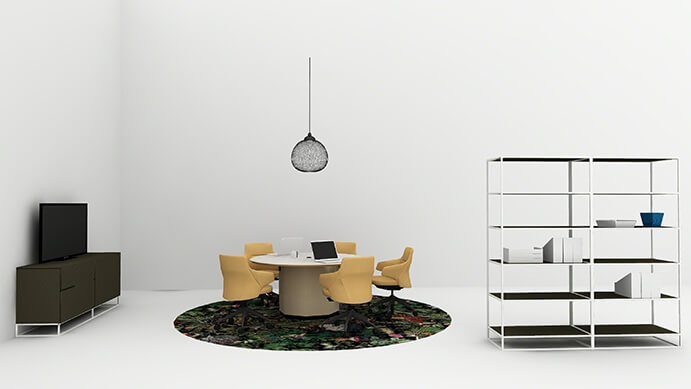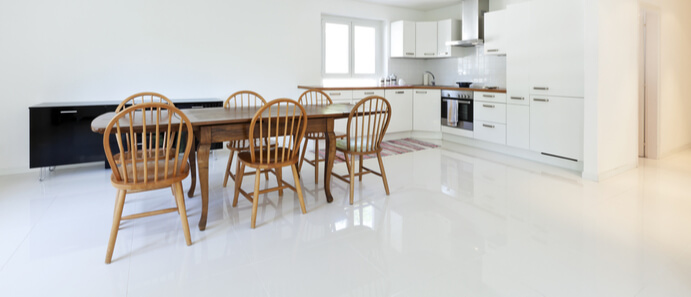 When coronavirus hit, a lot of companies and their workers felt strangely prepared for what was about to happen. Home working had been a reality for such a long time that it seemed feasible we could switch seamlessly into a semi-permanent ‘work-from-home state’ and a new era of distance collaboration could begin.
When coronavirus hit, a lot of companies and their workers felt strangely prepared for what was about to happen. Home working had been a reality for such a long time that it seemed feasible we could switch seamlessly into a semi-permanent ‘work-from-home state’ and a new era of distance collaboration could begin.
But this was all based on our experience of a time when home working was largely a choice. When homes were considerably quieter and emptier than they are now, with whole families being ‘locked down’ together at once. Now our homes are not just homes, they are schools and offices at the same time, not to mention rolling dining facilities and entertainment centres for people of all ages.
WFH is different now
The kitchens and living rooms we once used for our peaceful ‘work from home days’, are now being used by partners and children for a range of activities conducted at a range of volumes. And now we can’t even nip down to the local coffee shop for a change of scene and, besides, we’re restricted to a single trip outside a day. Many of us are retreating to quiet corners of the house instead and barricading ourselves in.
Different experiences - different pressures
For others, though, the opposite is the problem - those living on their own are coping with the anxiety of isolation and the disruption to familiar social bonds and working patterns. Life's normal rhythms have changed and there may be little human contact to fill the gap.
And the main issue is this - it’s not just one or two days a week, it’s every day for the forseeable future. Every day in the same home working set up, with potentially little variation in the location we’re working in, the lighting available to us and the postures we can adopt. In these new, untested conditions our bodies, minds and emotions can become unhelpfully restricted as we try and cope.
But this is a new reality for all of us and, whether we like it or not, we all have to find ways to adapt and make it work.
The webinar: how can our companies support our work-from-home wellbeing?
So, what can companies do to make all this easier for us? As Chris Congdon Editor in Chief of Steelcase’s 360 magazine notes:
“the relationship between our engagement level and our ability to be resilient and adapt and function during this time is so important. We should all think about how we can make sure that our organisations are helping people to know we are really looking out for their well being and thinking about it in a holistic way”
In Steelcase’s latest webinar, Making Distance Work, hosted by Chris, there are all kinds of work-from-home wellbeing tips for businesses to share amongst their leaders and teams. The discussion comprises a panel of guests including an ergonomist and two Steelcase work-from-home experts, who ask a series of fascinating questions.
Can a kitchen table become an ergonomic workstation? Should we try and duplicate our office working practices and apply them to this new reality? Is it going to be easier working from home compared to the trials of the daily commute and our office-bound days?
We round up some of their most interesting takes and recommendations here:
Kevin Butler, ergonomist - urges us to keep moving
It is of course, ideal if you have a kinetic, ergonomically designed chair to sit on. But, as Kevin points out, the aches and pains we may be experiencing as we hunker down in our work-from-home bunkers are often a result of simply not moving enough.
“Whether we have a good chair or a bad chair, sitting isn’t killing us. Sitting is a reality, but sitting for too long doesn’t have to be.”
Hyper-focused in our home offices, concentrating more in an unfamiliar working environment, tethered to the wifi for back to back video calls, it’s often hard to remember to break our posture and move around.
Kevin recommends scheduling time to move, setting alarms and notifications to remind us when we've been inactive too long. He also suggests setting goals for movement via our smart watches and other devices. Focusing on step goals even in lock down can provide the stimulus we need to look after our bodily health.
And here are the mantras he recommends to keep our bodies moving most helpfully throughout the day:
“move more, more often"
“maximise transitions”
“the next posture is your best posture"
But do we need to set up a dedicated work station to ensure our comfort and occupational health, or can we just use the sofa or kitchen table? Kevin gives some tips for working comfortably even in the most unpromising situations. A humble kitchen table and chair, he argues, could be turned into to an ergonomic work space, by simply cushioning our lumbar region more effectively, elevating the keyboard and relaxing our shoulders. The webinar is full of practical tips just like this.
Patricia Kammer - Principal Researcher at Steelcase - urges us to change our thinking to adapt to a new reality
When working from home should we duplicate the habits and practices we’ve been used to at work?
As we discussed earlier, you thought you were ready to work from home, but the 24/7 reality may be very different. So, maybe this is a perfect time to reconsider your working practices and find new and creative ways to use your time.
- Consider how you are going to communicate. Will a greater sense of informality in working styles help your team function more effectively as they potentially become more isolated? How can this translate into the kinds of meetings you hold- virtual coffees, more humour, more one to one conversations and support? One thing is for sure, we're going to have to find more ways to share our messages across our teams, keeping our thinking visible across everything we're doing.
- What cadences are you going to adopt in your working patterns? The daily stand up may be an important part of your teams daily routine, but not all work activities have to be synchronised. People can work at different times on different projects, coming together in various configurations digitally when it's most convenient for them. Flexibility is going to be key now that many people’s routines are being disrupted in different ways.
- We're going to have to exercise more self-care in this new reality, because levels of fatigue and exhaustion are ramping up. Just to take one example, endless video conferencing is exhausting people. Being on camera all day is tiring, it makes us more self-conscious , mono-focused on the screen, and can tether us to one spot. If we're going to be more productive we need make sure we can introduce more variety and mindfulness into our daily work routines over time.

Dr Tracey Bower - urges focus and optimism
Is working from home easier than working from the office?
The range of experiences that people are having in the locked down world is quite bewildering. Some people are experiencing new levels of distraction and some new levels of isolation. Being mindful of both these scenarios is going to help us understand each other better and make allowances that will help us all cope. Some people may want more opportunity to communicate, some may want less or need digital detox time built into their day.
In one sense we are lucky, because technology means we’re not missing out on anything and we can carry on working even in these challenging times. But the tech has a potential to become imperious, as it summons us to meetings and demands 100% focus on digital engagement.
Use tech holistically
Technology is supporting our work tasks, but it could be helping us with our mental health and also in our relationships. Work is fundamentally social and we should use tech to help each other in a holistic way.
The right technology can help us by offering predictability, social engagement and benign routine in this time of disruption and ambiguity, from the app that reminds us to move or helps us meditate - to the use of Zoom to facilitate regular social gatherings like workplace Fikas'.
Social distancing is important, but mental distancing is, too
Social distancing is critical but mental distancing is also paramount. We need to listen to and understand what the media is saying, for example, but we need to take breaks from it and keep a sense of perspective to prevent becoming overwhelmed.
Tracey recommends we regularly switch off social media, cultivate a sense of gratitude for the good things in our lives and focus on supporting each other. Many scientific studies have demonstrated the professional and personal benefits of optimism, generosity and mindfulness in our working lives. Now those traits may be needed more than ever.
Listen to the webinar for more insights
The Making Distance Work webinar is a really helpful listen for all of us struggling to adjust to this new reality.
Above all, it reminds us of the way a people-centred company culture, empowered by mutually supportive teams can maintain productivity and purpose through better mental and physical health.
“I am not alone on this journey. Everyone is doing their best. And, you can tell we are one family,”
Xiao Fei, Marketing Manager, Steelcase, Greater China









